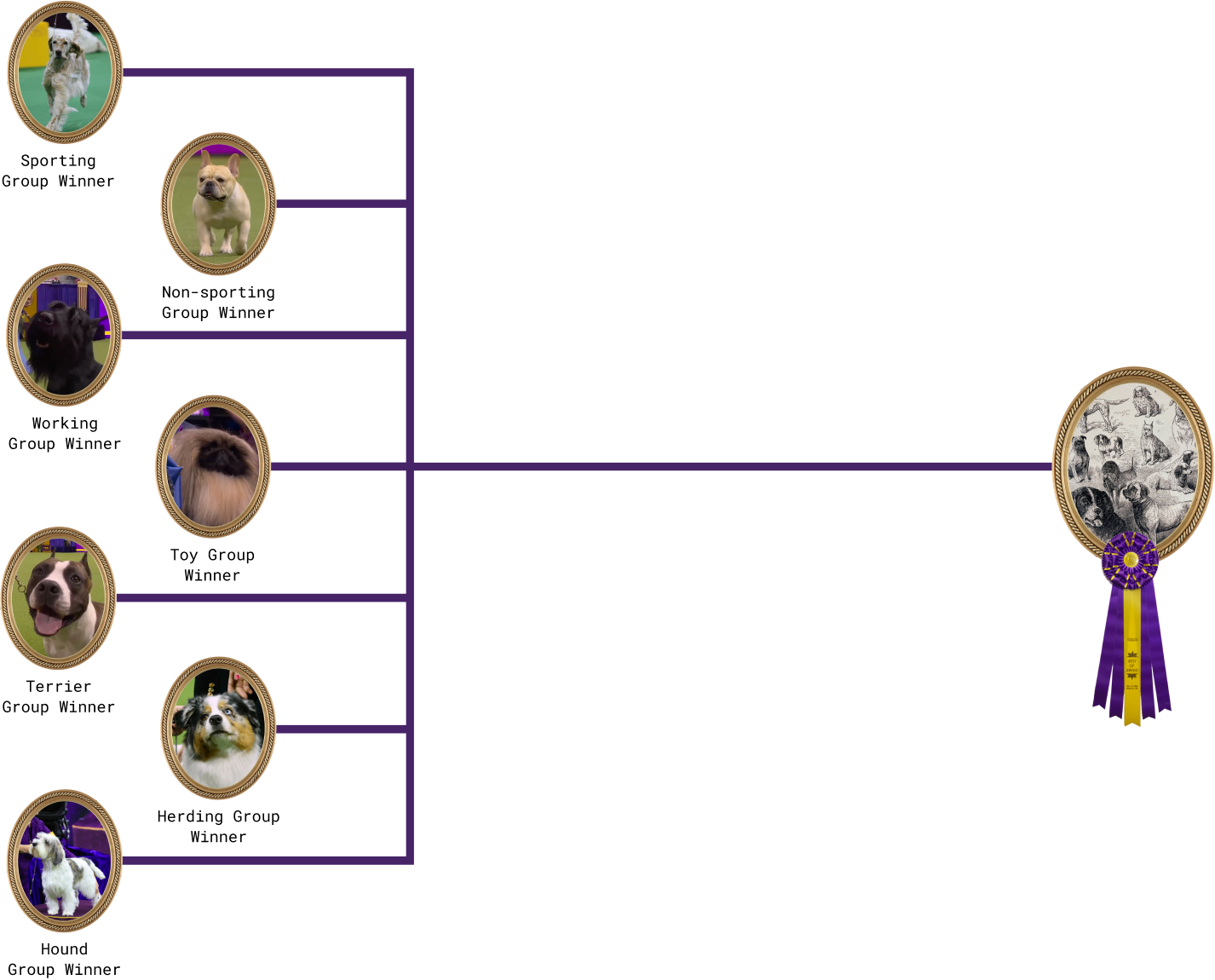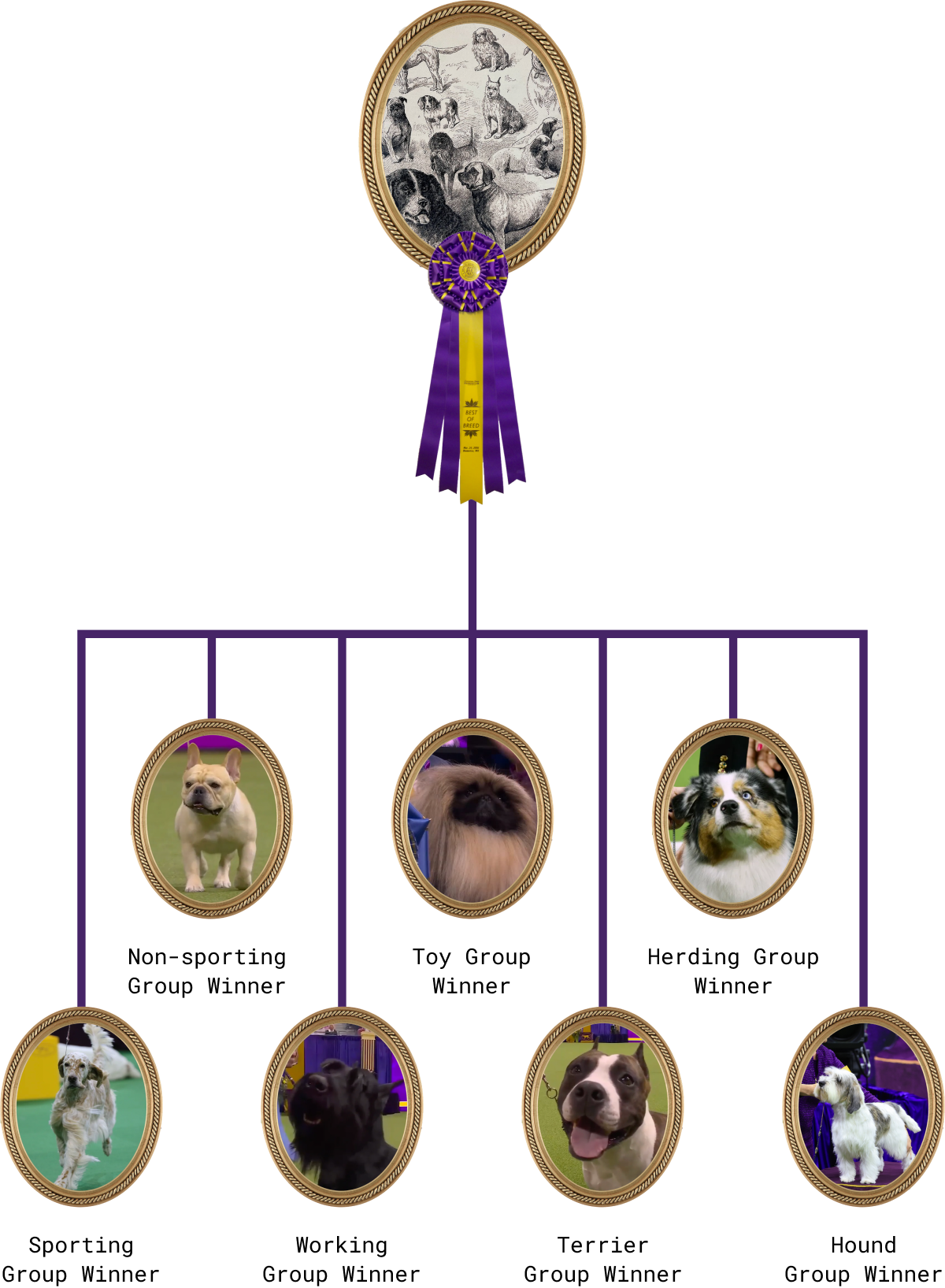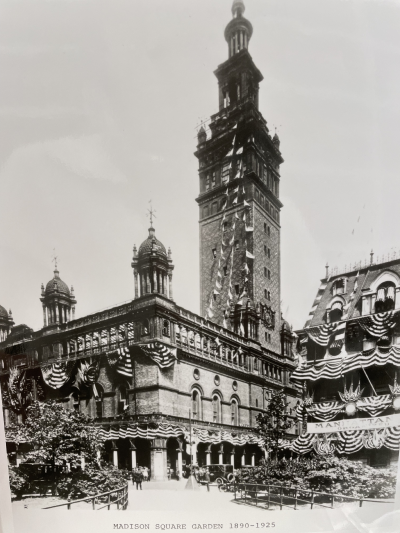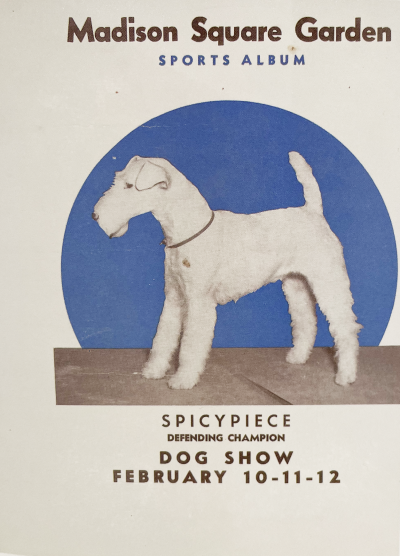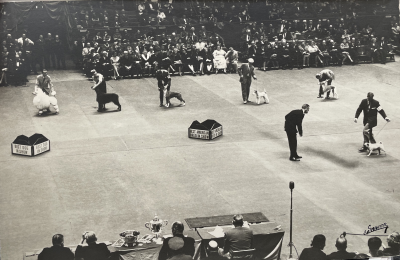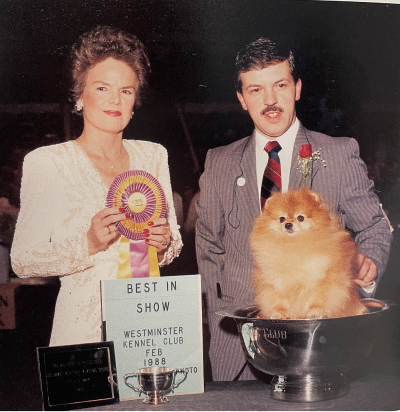The Westminster Kennel Club (WKC) was founded in 1877, with the first Westminster Dog Show being held the same year. Bearing the namesake of the hotel bar the founders frequented, Westminster is one of the longest continuously held sporting events in American history, second only to the Kentucky Derby by two years.
The WKC is a member of the American Kennel Club (AKC), a registry for purebred dogs which also sanctions competitive purebred show events that include the Westminster Dog Show, though the show itself predates the formation of the AKC, which was founded in 1884. The AKC’s headquarters are housed on the 5th floor of a monolithic Park Avenue skyscraper, 3 blocks off Bryant Park, and include a museum and library dedicated to the dog.
The breadth of the AKC’s collection ranges from canine ephemera, fine art, and curated exhibitions, to the hundreds of bound volumes noting entries and results from over a century’s worth of national show records and breeding standards. With such hard evidence, it’s difficult to dispute the unique role dogs hold in the lives of humans as a result of evolving in tandem with us.
Jaimie Fritz is an archivist at the AKC and, by virtue of association, has attended a couple of shows herself. “Most people’s inkling of Westminster probably has to do with the movie Best in Show,” said Jaime. Obviously it’s a satire, she notes, “but I think that it’s a good example of what the high pressure of such a competitive environment looks like behind the scenes, having met the exhibitors, handlers, and dogs. The show is a good way of bringing together what the breed standards are, why they change, and how the judging works.”
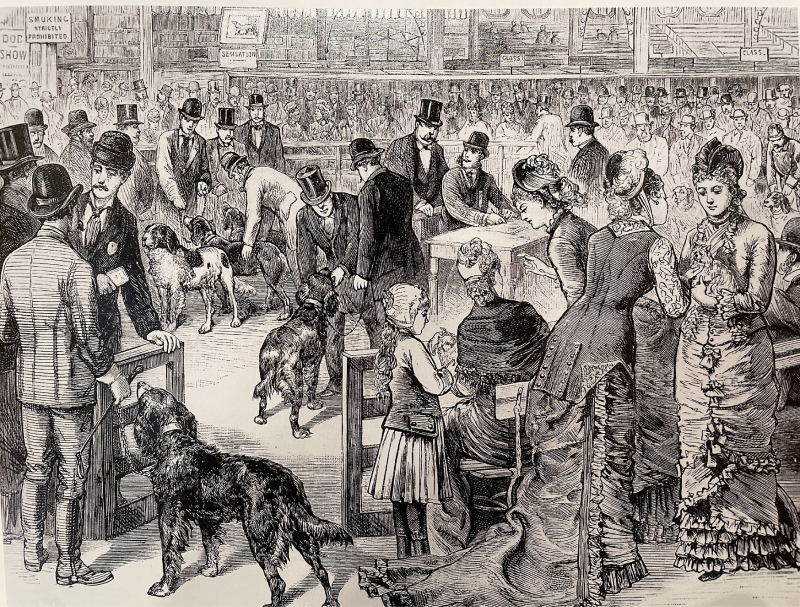
An engraving of a Westminster Dog Show from the late 1800s - early 1900s, courtesy of the AKC archives.
In the show’s 147-year history, what’s “best” is always in flux and changes are continuously being made as to how groups are classified in addition to prime breed conformational standards. “There are some breeds that compete now but didn’t exist then,” said Jaimie. “So you have instances where breeds are premiering at Westminster, where they’re just starting to compete, and the standards for the breed have just been established.” There are a total of seven distinct groups that contain a subset of breeds and categories. The Sporting, Non-sporting, Terrier, Toy, and Working groups were categorized and established in 1924, while the Hound group followed suit six years later in 1930 — Herding breeds, as their own distinct group, were not recognized until 1980.
Like most sports, players compete within sequential brackets, where losers are eliminated and winners advance towards the final bracket. In Westminster’s case, in order to win Best in Show, a dog would need to compete against all the other dogs in their respective breed, followed by all dogs within their group cohort to win the Best in Group title; the dog that is seen as the prime embodiment of the specific breed characteristics as well as the more general characteristics of the group, is then chosen as the Group Winner. From the Group Winners, of which there are seven, the finalists then compete for the highest title a dog can win. Winners receive a Best in Show championship title alongside trophies, cups, and bragging rights.
Between groups however, since the different breeds are so conformationally and temperamentally distinct from one another the main problem presents itself in selecting a Best in Show winner — how do you compare seven equally matched, but very different, dogs and choose the best one?
“You’re not making a direct comparison, side-by-side, between a chihuahua and a shepherd, rather looking at the breed standard,” said Jaimie, and judging itself is a rigorous process. Judges have to be up-to-date with what standards entail, she explained “they have to keep up with changes, so that they are able to confidently say ‘this the best example of this dog we can find, it’s doing the best job of representing the breed and its associated capabilities.’ It’s not the case of one versus the other, Jaimie said “rather which of these dogs is doing the best job of being the type of dog it’s supposed to be.”
The finalists bracket for Best in Show. 2023's competitors included Cider, an English Setter (Sporting); Monty, a Giant Schnauzer (Working); Trouble, an American Staffordshire Terrier (Terrier); Buddy Holly, a Petit Basset Griffon Vendeen (Hound); Winston, a French Bulldog (Non-Sporting); Rummie, a Pekingese (Toy); and Ribbon, an Australian Shephard (Herding) -
source.
Since 1924, the Terrier Group has dominated Best in Show titles with 34 wins — three were won by the same dog, Ch. Warren Remedy in 1907, 1908, and 1909 (she remains the only dog to have won three times). Distribution among the most Best in Show wins for non-Terrier groups are 19 for Sporting, 14 for Working, 12 for Toy, 11 for Non-Sporting, 8 for Hound, and 2 for Herding. The general trend of awarding Best in Show to Terrier, Sporting, and Working breeds can likely be explained by the WKC's sporting and game roots, but becomes more evenly distributed over time.
On a more general level, Westminster is a benched show, meaning owners are required to arrive at a certain time and station their dogs on partitioned wooden stands (referred to as benches) for public display until the end of regular judging. From its conception and as a nod to its roots in Victorian dog shows, Westminster also maintains formalities and standards of conduct for attendees, which include a dress code and guidelines on how to behave around the dogs (no petting, etc.).
Decorum and workings aside, what is it about the show that makes it so special? “[The Westminster Dog Show] is the most recognizable show,” said Jaimie. “It’s interesting, from a historical perspective, to look at trends in particular with groups and breeds relative to popularity and how they coincide with specific periods.” But also, she adds “In terms of it being such a production. Historically, it’s been held at Madison Square Garden (MSG) and is one of the oldest running sporting events in the country.”
The show has been housed at all four Madison Square Garden arenas until its move to upstate New York in 2021 to comply with COVID guidelines. “I don’t think people quite know how long the history of Westminster being in New York goes back,” Jaimie notes. “I attended the show upstate and I went again this year when it was held at the tennis stadium in Queens,” she recalls. “I thought it was really great, since I’m from Queens, so I thought it was really cool to see it move to the neighborhood I grew up in and have it held around there.”
“The show, at the time that it moved up to Tarrytown, had been either the second or the first-longest running continuous sporting event at MSG.” To me, said Jaimie, “MSG is a huge part of New York and Westminster is a huge part of MSG. So just by being a part of the city for so long, and being such a hugely popular event with a massive production, the event is connected to New York’s history in that way.”

A dog's show name also describes its pedigree and championship status (
source)
This year, it was CH Sole Trader Buddy Holly (call name Buddy), a six year old Petit Basset Griffon Vendeen hound, that took home the coveted Best in Show title. Though Buddy is arguably the most famous dog of 2023, at the end of the day he’s still a dog. “The day after the show the Westminster winners stop by the AKC headquarters for a little photoshoot, and we get to pet them,” shared Jaimie. “It’s the best. They like belly rubs and sloppy kisses, like most dogs.”
And that’s another thing, Jaimie noted: “Yes the show is a competitive event but it’s also somewhat like going to a professional conference, everyone’s getting back together and checking in, and the dogs are still dogs, they’re socializing with each other while getting their hair blow dried and stuff,” she muses. “It’s a fun and interesting place to be, to hear how people are passionate about dogs, breeding standards, and how they go about it all.”
Below is a chart that represents all the Best in Show winners starting in 1924. Though The Westminster Dog Show has been held since its inception in 1877, data for Best of Group first dates back to 1924. Westminster itself is notoriously resilient, having gone on despite anecdotal accounts of power outages, ice storms, and suspected dog poisonings — historically, it predates the invention of the lightbulb, the Brooklyn Bridge, and Stop signs, and over the last 147 years has witnessed the Great Depression, both World Wars, and more recently the pandemic.



